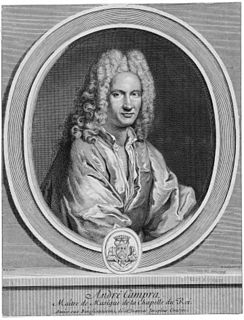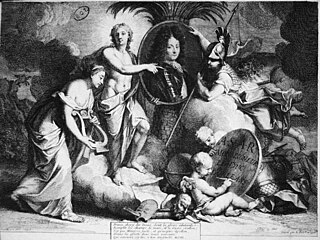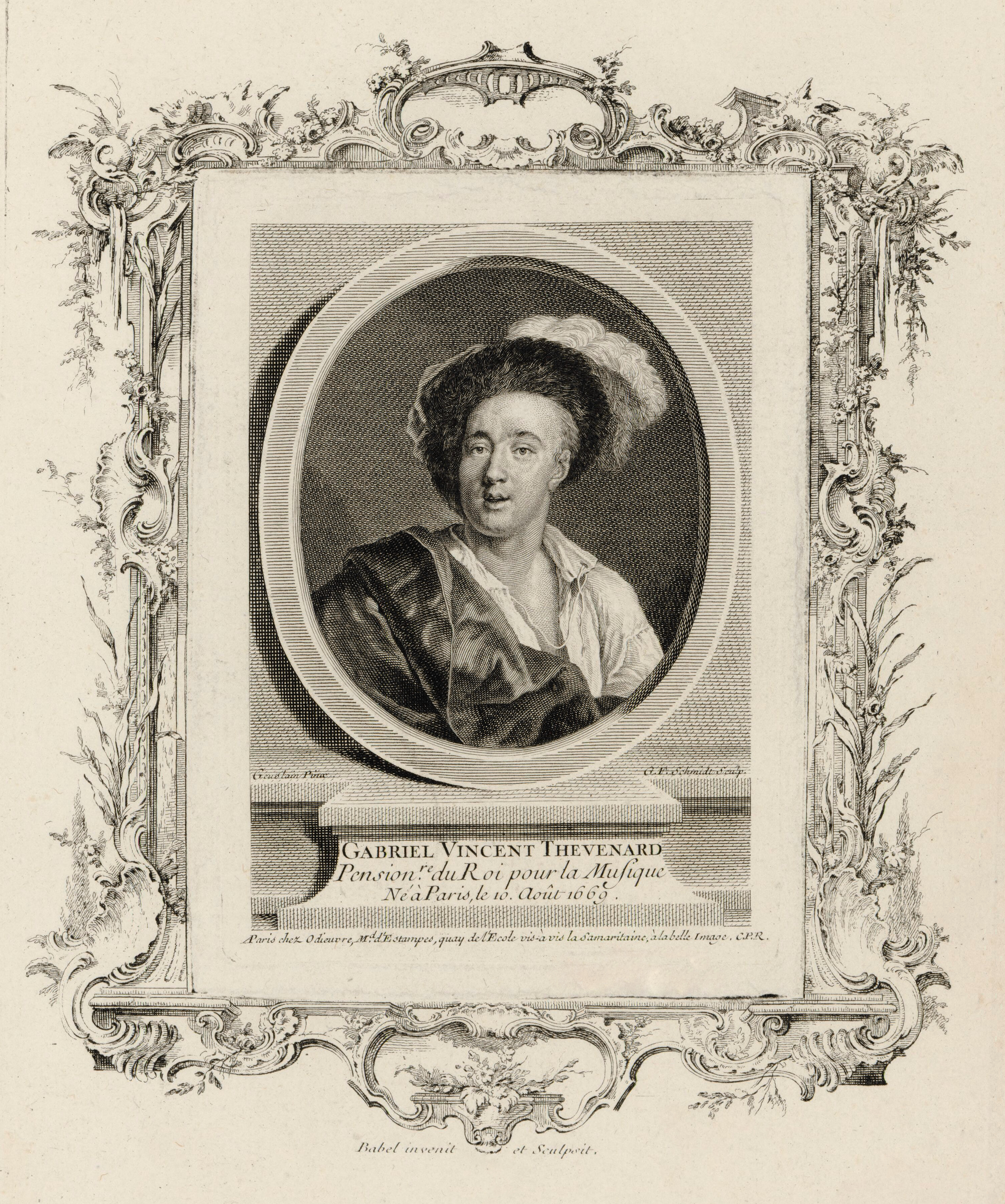
André Campra was a French composer and conductor. The leading French opera composer in the period between Jean-Baptiste Lully and Jean-Philippe Rameau, Campra wrote several tragédies en musique and opéra-ballets that were extremely well received. He also wrote three books of cantatas as well as religious music, including a requiem.

Antoine Houdar de la Motte was a French author.

Gustave Charpentier was a French composer, best known for his opera Louise.

Leopold the Good was Duke of Lorraine and Bar from 1690 to his death. He is the direct male ancestor of all rulers of the Habsburg-Lorraine dynasty, including all Emperors of Austria.
Tragédie en musique, also known as tragédie lyrique, is a genre of French opera introduced by Jean-Baptiste Lully and used by his followers until the second half of the eighteenth century. Operas in this genre are usually based on stories from Classical mythology or the Italian romantic epics of Tasso and Ariosto. The stories may not necessarily have a tragic ending – in fact, most do not – but the works' atmospheres are suffused throughout with an affect of nobility and stateliness. The standard tragédie en musique has five acts. Earlier works in the genre were preceded by an allegorical prologue and, during the lifetime of Louis XIV, these generally celebrated the king's noble qualities and his prowess in war. Each of the five acts usually follows a basic pattern, opening with an aria in which one of the main characters expresses their feelings, followed by dialogue in recitative interspersed with short arias, in which the main business of the plot occurs. Each act traditionally ends with a divertissement, offering great opportunities for the chorus and the ballet troupe. Composers sometimes changed the order of these features in an act for dramatic reasons.
Jean-Joseph Mouret was a French composer whose dramatic works made him one of the leading exponents of Baroque music in his country. Even though most of his works are rarely performed, Mouret's name survives today thanks to the popularity of the Fanfare-Rondeau from his first Suite de symphonies, which has been adopted as the signature tune of the PBS program Masterpiece and is a popular musical choice in many modern weddings.

Henri Desmarets was a French composer of the Baroque period primarily known for his stage works, although he also composed sacred music as well as secular cantatas, songs and instrumental works.

Michel de la Barre was a French composer and renowned flautist known as being the first person to publish solo flute music. He played at the Académie Royale de Musique, the Musettes and Hautbois de Poitou and the courts of Louis XIV and Louis XV.

Jean-Baptiste Stuck was an Italian-French composer and cellist of the Baroque era.

Gabriel-Vincent Thévenard was a French operatic baritone.

Iphigénie en Tauride is an opera by the French composers Henri Desmarets and André Campra. It takes the form of a tragédie en musique in a prologue and five acts. The libretto is by Joseph-François Duché de Vancy with additions by Antoine Danchet. Desmarets had begun work on the opera around 1696 but abandoned it when he was forced to go into exile in 1699. Campra and his regular librettist Danchet took up the piece and wrote the prologue, most of Act Five, two arias in Act One, an aria for Acts Two and Three, and two arias for the fourth act. The plot is ultimately based on Euripides' tragedy Iphigeneia in Tauris.
Louis Lacoste, also given as De La Coste was a French composer of the Baroque era. He was a singer, first appearing in the chorus of André-Cardinal Destouches' Issé (1697) then chorus master and leader of the orchestra at the Paris Opéra. He composed several works for the stage, the most successful of which was Philomèle, first performed on 20 October 1705 by the Académie Royale de Musique at the Théâtre du Palais-Royal in Paris, and revived in 1709, 1723, and 1734. Bradamante was a "bruising failure".
Louise de Maisonblanche, was an illegitimate daughter of Louis XIV of France and Claude de Vin des Œillets, the called Mademoiselle des Œillets, who was the lady-in-waiting to Madame de Montespan, Louis' long term mistress.
The abbé Simon-Joseph Pellegrin (1663 – 5 September 1745) was a French poet and playwright, a librettist who collaborated with Jean-Philippe Rameau and other composers.
The House of Potier was a noble house in Ancien Régime France. Members of the Potier family were Nobles of the Robe who gained their prominence through serving the King of France.

Princess Maria Anna Amalia of Courland was a landgravine of Hesse-Kassel through her marriage on 21 May 1673 to her first cousin Charles I, Landgrave of Hesse-Kassel. She was the child of Jacob Kettler, Duke of Courland and Semigallia and Margravine Louise Charlotte of Brandenburg, eldest daughter of George William, Elector of Brandenburg. Her eldest son became King Frederick of Sweden.
Jean-Jacques Quesnot de La Chênée was a French playwright and theatre manager at the end of the 17th century who performed mainly in the Spanish Netherlands.
Jean-Laurent Le Cerf de La Viéville, seigneur de Fresneuse, was a French magistrate and musicographer.
Catherine-Nicole Lemaure or Le Maure was a French operatic soprano. In 1719, she joined the Paris Opera's chorus, and after 1723 she sang many leading and titular roles throughout a career noted for sudden and unpredictable retirements until her final retirement in 1744.
Aurelio Aureli was an Italian librettist.









